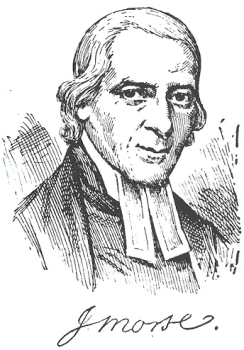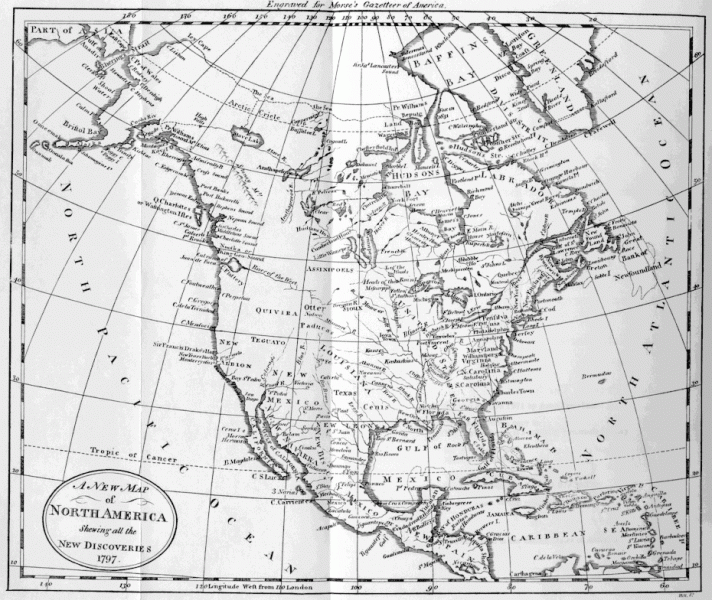Jedidiah Morse
Today, Jedidiah Morse's geography. The University of Houston's College of Engineering presents this series about the machines that make our civilization run, and the people whose ingenuity created them.
We've said a lot about Samuel F. B. Morse and his telegraph. Morse was born in 1791 near Boston. Of eleven Morse children, only he and two brothers survived childhood in that harsh world.
 But our interest is in Samuel's father, Jedidiah Morse -- born in Connecticut and educated at Yale during the American Revolution. When he graduated he stayed on to study theology, and he supported himself by forming a girls' school. From then on, Jedidiah Morse's life unfolded with a powerful but peculiar logic. First, the 23-year-old Morse wrote a geography book for his young students. He kept working on geography after he was made pastor of a Congregational church in Charlestown, Massachusetts, near Boston. For 13 years he gathered geographical data from mapmakers, explorers, and geographers.
But our interest is in Samuel's father, Jedidiah Morse -- born in Connecticut and educated at Yale during the American Revolution. When he graduated he stayed on to study theology, and he supported himself by forming a girls' school. From then on, Jedidiah Morse's life unfolded with a powerful but peculiar logic. First, the 23-year-old Morse wrote a geography book for his young students. He kept working on geography after he was made pastor of a Congregational church in Charlestown, Massachusetts, near Boston. For 13 years he gathered geographical data from mapmakers, explorers, and geographers.
In 1796 he finished the first comprehensive geography of North America. Titled The American Gazetteer, it included seven large foldout maps and seven thousand articles on the various places.
He tells us that Manhattan is "the ancient name of Long Island, and also of York Island," and that a harbor in California is called Drake Harbor. When we look at the map, we find that Drake Harbor was the name given to San Francisco Bay two hundred years ago. Morse has left us with a vast record of early Colonial place names.
Nor was Morse idle as a clergyman. He wrote extensively in support of orthodox Calvinism and against the rising tide of liberal Unitarianism. He was a founder of the Andover Theological Seminary. Then, at the age of fifty-nine, his life took yet another turn. His interest in America's geography had brought him to a strong concern for America's Native inhabitants. In 1820 he returned to Yale and accepted an appointment from the Secretary of War to do a major study of American Indians.
For two years he traveled from one Indian nation to another, describing each tribe -- a few hundred here, a thousand there. The tone of his report is always one of consummate respect. Of course he was dealing in a swamp of treaties, agreements and vested interests. But at that early date he was still operating in good faith.
In those days, Indians were deeply involved in commerce with whites. Morse lists the cost of hides and Indian blankets in powder and musket balls. The Indian population already included mixed races and freed slaves. Some tribes barred Jesuit missionaries because they obviously carried the devastating disease of smallpox.
The mood would soon change as the Indians were driven west. But, for the moment, Morse captures a time of détente between two very different ethnic groups. Taken together, all Morse's writings do that. They give us a window upon a vast world poised to shrink.
In a few years, his son's new telegraph would give us instant communication with remote Astoria and Drake's Bay. A few generations later, we find ourselves reading the dream that was manifest in Morse's sprawling geography, in airline schedules.
I'm John Lienhard, at the University of Houston, where we're interested in the way inventive minds work.
(Theme music)
Morse, J., The American Gazetteer, ... . Boston: At the Presses of S. Hall, and Thomas Anderson, 1797. (See also a facsimile copy titled The First American Frontier. [New York??]: Arno Press, Inc., 1971.
Morse, J., A Report to the Secretary of War of the United States, on Indian Affairs. New York: Augustus M. Kelley, 1970.
For more on Jedidiah Morse's life see The National Encyclopaedia of American Biography and various editions of the Encyclopaedia Britannica.

Morse's map of North America
For a full-size image click on the thumbnail above.